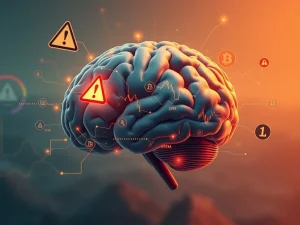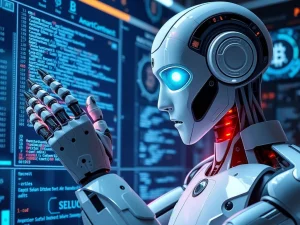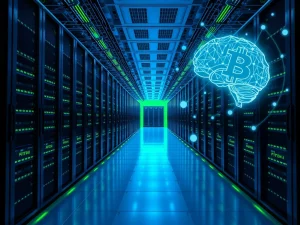ChatGPT-5 Backlash: Why Users Are Flocking to AI Rivals

The highly anticipated ChatGPT-5 upgrade has sparked significant user backlash. Many users expressed disappointment across social media platforms. This reaction comes as AI rivals intensify competition in the rapidly evolving artificial intelligence landscape. The crypto community, always keen on technological advancements, closely watches these developments.
ChatGPT-5 User Backlash and OpenAI’s Response
OpenAI released its latest ChatGPT-5 model on Thursday. It faced immediate criticism. Users flooded social media forums with negative feedback. Many felt OpenAI overhyped the upgrade. This sentiment came from OpenAI CEO and co-founder Sam Altman. Reddit users specifically criticized the more restrictive rate limit. They also disliked the inability to switch back to previous AI models. Some users even threatened to move to competing AI platforms. This user sentiment quickly caught OpenAI’s attention.
Sam Altman addressed the complaints directly on X. He pledged improvements to the platform. “We are going to double GPT-5 rate limits for ChatGPT Plus users as we finish rollout,” Altman stated. He also added, “We will let Plus users choose to continue to use 4o. We will watch usage as we think about how long to offer legacy models for.” Altman had previously called GPT-5 “a major upgrade over GPT-4.” He also described it as a “significant step” towards Artificial General Intelligence (AGI) during its official rollout. This response aimed to quell the growing dissatisfaction.
The Rise of AI Rivals: DeepSeek AI’s Challenge
The negative user feedback for ChatGPT-5 emerges amidst increasing competition. Many new platforms are gaining market share. These include open-weighted, open-source, and decentralized AI solutions. They are often less capital-intensive than large, centralized players. These nimble projects are actively eating away at the consumer AI market share.
For example, DeepSeek AI, an artificial intelligence company, introduced a new open-weighted large-language model (LLM) in April. This model, called Prover V2, specializes in mathematics. Open-weight AI models allow public access to the software. Users can download and use it. However, they keep critical aspects, such as training data, private. This offers more transparency than centralized models. Yet, it is less open than full open-source code. Full open-source code grants users complete access to the codebase. Users can fully reproduce the software from this code. DeepSeek provides a middle ground.
In May, DeepSeek also released an upgrade to DeepSeek R1. This is a more general-purpose open-weighted AI model. Benchmarks from the company show DeepSeek R1-0528 performed on par with leading AI models. These include OpenAI-o3. The DeepSeek app has seen impressive adoption. It recorded over 75 million downloads since its January release. This data comes from Business of Apps. Such rapid growth highlights the competitive pressure on established players like OpenAI.
Open-Weight vs. Centralized AI: A Shifting Landscape
The distinction between open-weight and centralized AI models is crucial. Centralized models, like earlier ChatGPT-5 versions, operate as “black boxes.” Users have no insight into their internal workings. Open-weight software, conversely, offers more transparency. Users can examine parts of the code. This increased visibility fosters trust and innovation.
Decentralized AI platforms also pose a significant threat. They aim to democratize AI development. This model distributes control and resources. It potentially reduces the dominance of large corporations. This paradigm shift could redefine the future of AI development. It offers more options for users and developers alike. The ongoing competition benefits the entire AI ecosystem.
Navigating the Future of Artificial General Intelligence (AGI)
Sam Altman frequently discusses the path to Artificial General Intelligence (AGI). He views each new model, including ChatGPT-5, as a step forward. However, the recent user backlash suggests challenges remain. Achieving true AGI requires not just computational power but also user acceptance. The community’s feedback is vital for this journey.
The rise of AI rivals and diverse AI models signals a maturing market. Users now have more choices. This competition pushes all developers to innovate further. It also encourages them to address user needs more directly. The future of AI will likely involve a mix of open, closed, and decentralized approaches. This dynamic environment promises continued advancements and shifts.









